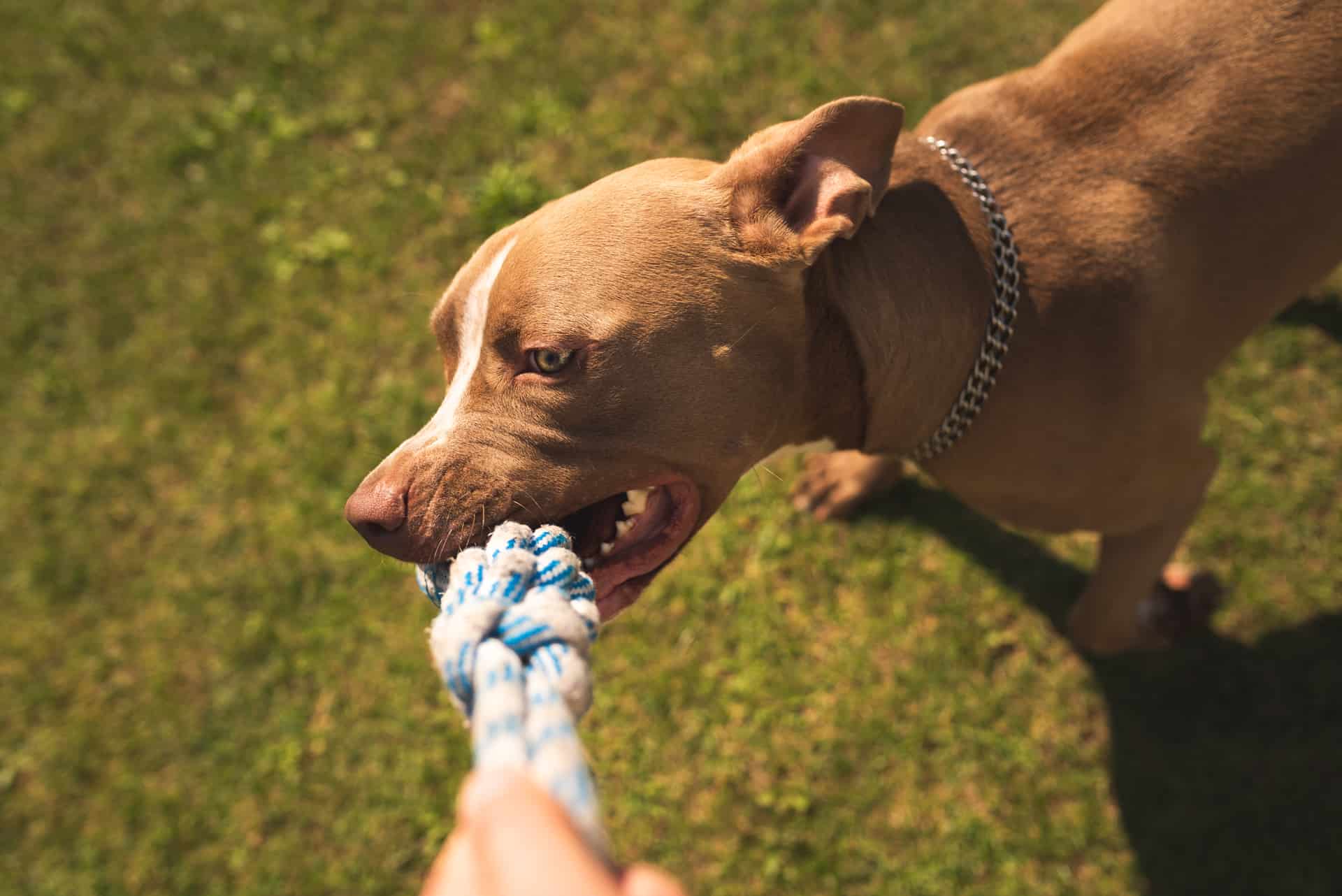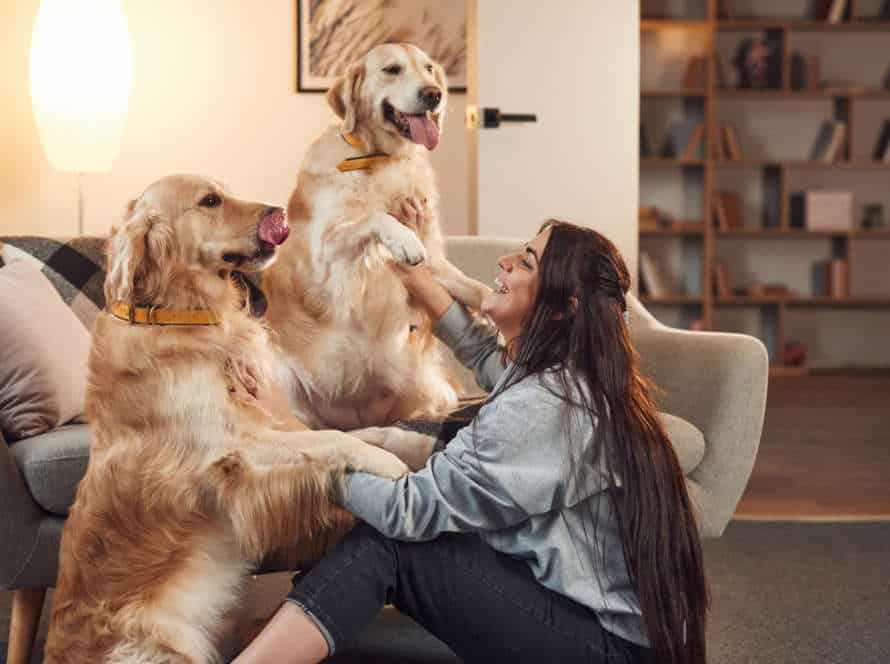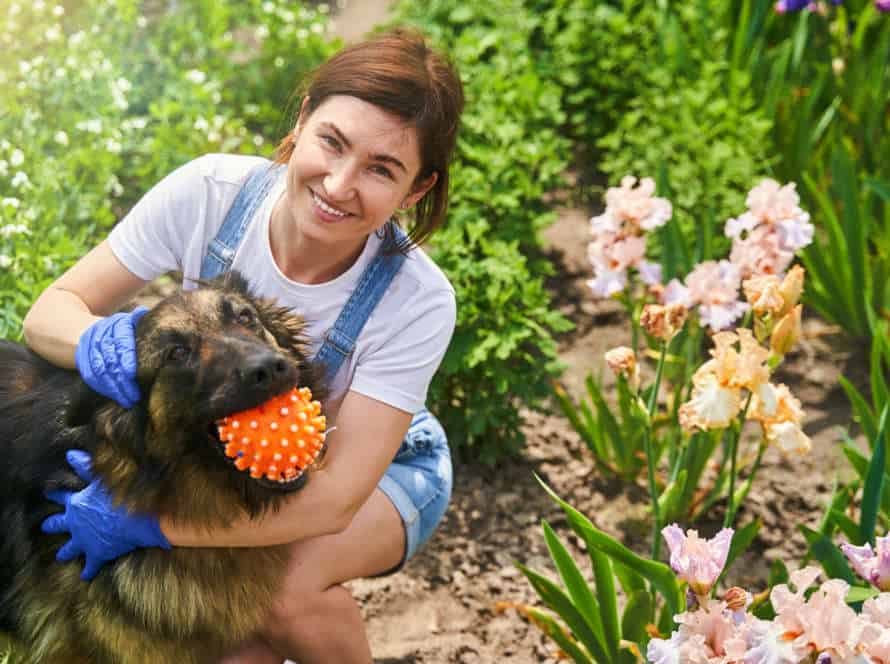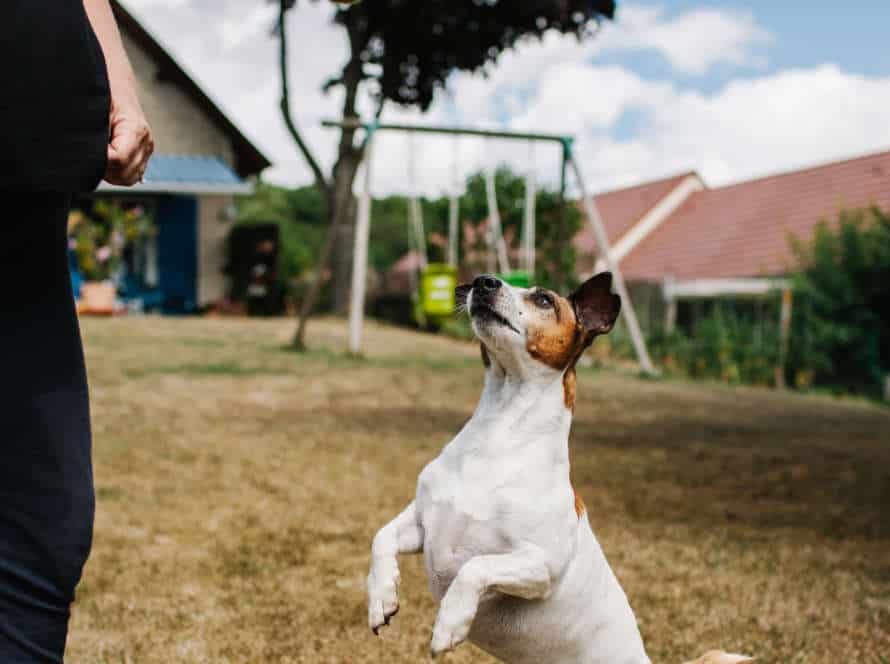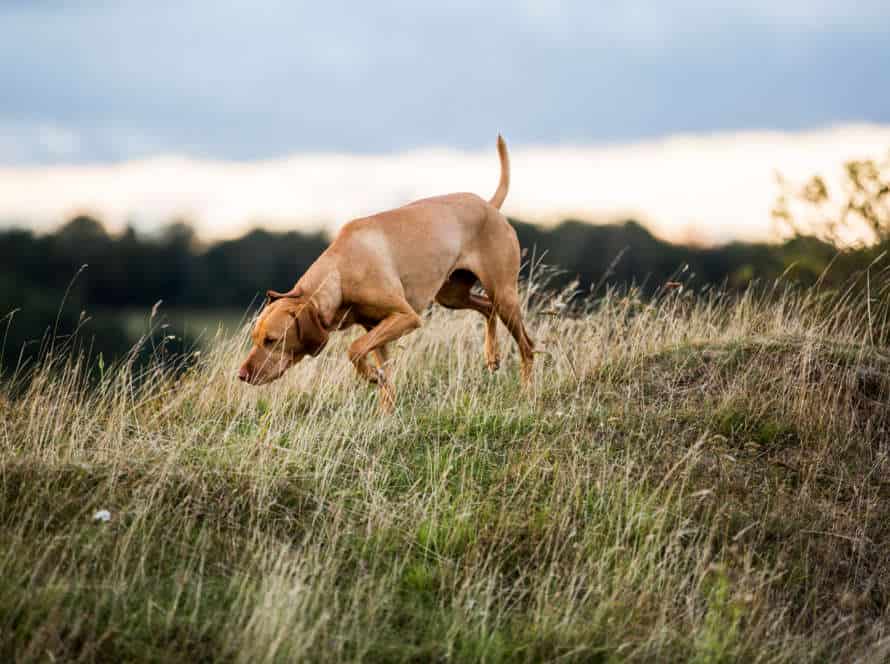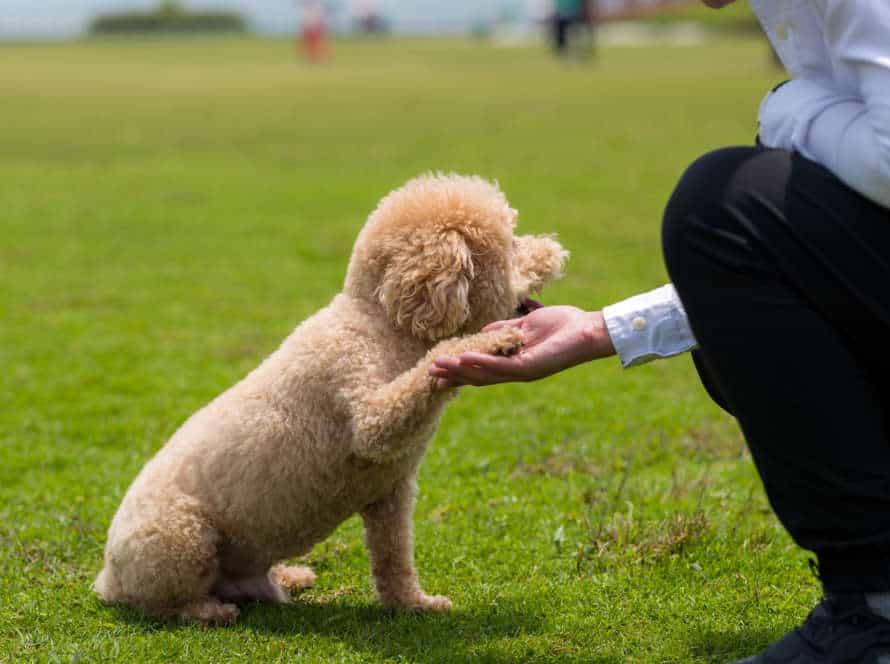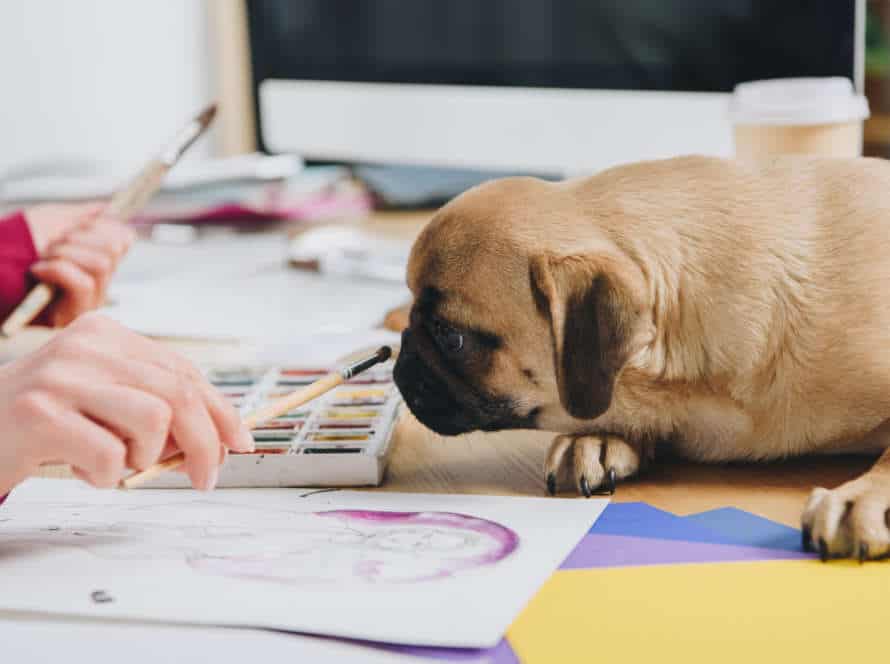Tug of War: How to Introduce the Game to Your Dog
Tug of war can be a nice way to bond with your pup. But, it’s essential to start it right. Here are a few tips:
- Teach your dog “drop it” to stop any bad behavior.
- Use a special tug toy to show when the game starts.
- Let your pup win once in a while. That’ll keep them motivated.
- Monitor the game and stop if your pup gets too excited.
- Introduce tug of war the right way for a fun and safe bonding experience.
Understanding Tug of War as a Game for Dogs
Tug of War can be fun for both you and your pup! More than just grabbing a rope and pulling, it’s important to understand how to play the game with your dog.
To make sure it’s engaging and safe, let’s take a look at the dynamics of the game. Introduce your pup to it gradually and safely. Enjoy the game together!
The Benefits of Playing Tug of War with Your Dog
Playing tug of war can give your pup lots of benefits – exercise, mental stimulation and bonding.
Understand tug of war as a game for dogs. It can be a great way to bond and give them energy release. But, teaching them how to behave is crucial. Not all dogs like it, so introduce it gradually.
Before playing, make sure your pup has had enough exercise and is in a good state of mind.
Choose a durable tug toy and offer it without pulling back. If they show interest, gently tug without pulling too hard or aggressively.
Take regular breaks and use ‘release’ cues to teach them to drop the toy when asked. Praise them frequently for good behavior during the game.
Common Misconceptions About Tug of War
Tug of War is often seen in a bad light when it comes to dogs. But, when done right, it can be great exercise for your pup – both mentally and physically! Let’s debunk three common misconceptions about Tug of War:
- Tug of War can make your dog aggressive: Not true! If you set rules and boundaries, it can teach your dog control, patience and impulse control.
- It can lead to dominance issues: Dogs don’t see Tug of War as a power struggle, it’s just a fun game for them to interact with you!
- It’s not safe for dogs: With the right toys made for this purpose, it is safe. Just make sure to keep an eye on your pup so they don’t choke or swallow the toy.
When starting out, begin slowly by setting rules and rewarding good behaviour. Pro tip: Let your dog win the toy at the end, to stop them from getting possessive or aggressive.
Key Rules to Follow when Playing Tug of War with Your Dog
Playing tug of war with your pup can be a fun, interactive way to bond. But, it’s important to have rules for safety and control. Here are some tips on how to play tug of war safely:
- Teach your pup to drop the toy when you say a command. Use treats or another toy as a reward.
- Use dedicated tug toys, not items that could be mistaken for something else.
- Let your pup initiate the game. Stop if they get too excited or aggressive.
- Have a cue word for starting and stopping.
- Avoid playing with dogs that have had aggression issues in the past.
Follow these rules to have a great game of tug of war with your furry friend and build an even stronger bond.
Introducing Your Dog to Tug of War
Tug of War is an awesome game to bond with your pup! It’s also great for their physical and mental well-being. Before you start playing, you must teach your dog the rules. Here’s how to introduce your pup to tug of war the right way. Enjoy!
Assessing Your Dog’s Temperament for Tug of War
Assessing your pup’s temperament is a must before playing tug-of-war. Not all doggos are suited for this game, and it’s vital to make sure it’s safe and fun for both of you.
Here are traits that make dogs unsuitable for the game:
- Aggression– if your pup growls, snarls, or bites, don’t play tug-of-war as it can make bad behaviour worse.
- Possessive behaviour– if they are possessive of toys or food, it’s not wise to play tug-of-war.
- Mouthiness– if they often put their teeth on people, don’t play.
If your pup doesn’t have any of these traits, you can start by playing with a toy, like a tug rope. Tip: Don’t jerk or pull too hard, to avoid injuries.
Choosing the Right Tug Toy for Your Dog
Choosing the right tug toy for your pup is key to keep them entertained and teach them Tug of War in a safe and enjoyable way. Here are a few tips to help you select the proper toy for your pup:
- Rope toys: Rope toys are ideal for tug of war as they’re strong and can take a lot of playtime. Make sure the rope is thick and durable, and always supervise your pup when they’re playing.
- Rubber toys: Rubber toys are great for pups that love to chew. Choose a rubber tug toy with sturdy handles on both ends so it’s easier for them to grip. Pick a size that suits your pup’s jaw size.
- Soft toys: Soft toys are great for beginning training sessions. Find a soft toy that’s easy for your pup to hold and not too small or too big. Always watch over them while they’re playing with soft toys.
It’s always important to supervise your pup while they’re playing with tug toys – this will help prevent any accidents and make sure you and your pup have a blast.
Teaching Basic Commands and Techniques for Tug of War
Tug of war is a fun way to bond with your pup. But, before you get started, teach them some basic commands. Use a dedicated tug toy. Let your dog start the game, but make sure they know the rules! Praise them when they release the toy. Practice intermittently and end the game on a sweet note. By following these tips, you and your pup can have a safe and fun tug of war experience.
Building a Strong and Safe Tug of War Game with Your Dog
Tug of war with your pup is an awesome way to connect and train! It’s super stimulating for both of you, and it strengthens your bond. But it’s important to start it correctly – here’s some tips for a safe and fun tug of war game with your pup.
Monitoring Your Dog’s Behavior and Signals during Play
Tugging with your pup can be great fun; but it’s important to keep an eye on their behavior. Here are 4 key signals to watch for:
- Play Bows – when the dog lowers their front and raises their rear, they want to play.
- Loose Jaws – relaxed jaws mean they’re comfortable.
- Growling – normal, but if it gets too intense, pause the game.
- Tail Wagging – it’s a sign of excitement, but look at the rest of their body language too.
By noticing these signs & taking breaks, you’ll have a strong & safe tugging game with your pup!
Setting Limits and Boundaries for Tug of War
Tug of war with your pup requires boundaries. Here are some tips to help you:
- Use a toy made for the game; no random objects.
- Only start when your dog knows commands.
- Train them to release the toy and reward them.
- No yanking or pulling hard – injures can occur.
- Don’t play tug-of-war with aggressive or dominant dogs, or pups under 4 months.
If you set and stick to these limits, you and your pup can have a fun and healthy tug of war game.
Reinforcing Positive Behaviors and Good Sportsmanship
Reinforcing good behavior and sportsmanship is key when playing tug of war with your pup. It creates a safe game and sets boundaries for their behavior. Plus, it establishes trust between you and your furry friend.
Tips to reinforce good behavior and sportsmanship:
- Show your dog the toy and let them explore it.
- Make a cue like “Drop it” or “Give” to signal when to release the toy.
- Encourage your pup to use only their mouth, not paws or teeth.
- Stop if your pup gets too excited or aggressive. Let them calm down before restarting.
- Always reward good behavior with treats and praise.
Tug of war can be fun for both of you – as long as you reinforce good behavior and create a respectful environment.
Troubleshooting Tips for Common Tug of War Problems
Ever played Tug of War with your pup? It can be tough. From nips to overly aggressive moves, there are issues that can crop up. Here are some helpful tips to make sure your dog plays safely and correctly. Introduce your dog to the game of Tug of War with these troubleshooting ideas!
Aggressive Play and Behavior
Tug-of-war can be a tricky game for pet owners, as it can lead to aggressive behavior in their furry friends. Here are some tips to help tackle this issue:
- Firstly, it’s important to evaluate if your pup is too aggressive, which might point to more problems. To prevent this, introduce tug of war in a controlled and positive environment.
- Secondly, teach your pup basic commands like “drop it” and “leave it” to help in case of aggressive play.
- Lastly, make sure you have the right toy for tug of war. Small or weak toys can break and cause injury or encourage aggression. Opt for sturdy ones that are designed for this game.
Remember, tug of war is great for bonding, but must always be done under supervision.
Resource Guarding and Toy possessiveness
Resource guarding and toy possessiveness are common issues when playing tug-of-war with your pup. Here’s how to handle them:
Resource Guarding: If your dog growls, snaps, or bites when you take away the toy, it’s resource guarding. Teach your dog the “drop it” or “leave it” command. Make it more challenging by adding distractions. Keep repeating the command until your pup releases the toy.
Toy Possessiveness: If your pup won’t drop the toy, or becomes aggressive, it’s best to avoid tug-of-war games. Work on obedience training, impulse control, and socialization exercises instead.
Pro tip: Supervise your dog during playtime. Establish clear rules and boundaries to prevent aggression and injury.
Injuries and Accidents during Tug of War
Tug of war can be fun and helpful for pups – but safety’s key! Here’re some tips to keep ’em safe:
- Supervise your pup when playing tug of war – never leave ’em unmonitored.
- Teach your pup the “drop it” command. To avoid them biting too hard or not lettin’ go.
- Use a designated tug toy that’s strong and durable. No sharp edges or small parts for them to swallow.
- If your pup has dental or jaw issues, skip playing tug of war.
- Modify the game if your pup gets too aggressive. And end if necessary.
Advanced Tug of War Skills and Strategies
Teaching your pup to play tug of war can be super fun! It’ll strengthen the bond between you and your furry pal. Once your doggo has the basics, you can introduce more advanced skills and strategies. Let’s take a look at some of the most important ones.
Advanced tug of war can make the game more stimulating and entertaining.
Team Tug of War with Multiple Dogs
Tug of War with multiple pups needs expert tug of war skills and tactics to make sure it’s a fun and secure game for all dogs. Here’s some tips to introduce the game to your hounds and keep them safe:
- Introduce the game to each pup one-by-one. Check out their tug of war prowess and see if they’re comfy.
- Once each pup is cool with the game, let them play in pairs.
- Gradually increase the number of pups playing until you have a full team.
- Give each pup a designated handler to keep them safe during the game.
- Use toys made specially for tug of war games that can handle pulling from multiple doggos.
- Keep an eye on the game and end it quick if a pup shows signs of distress or aggression.
- Remember safety always comes first and make sure each pup’s having a blast playing.
Teaching Advanced Commands and Tricks for Tug of War Play
Tug of war is an awesome game for pups and their owners. To take the fun to the next level, here are a few ideas!
- Teach “Drop it”: This command can help your canine let go of the toy when the game is over.
- Get them to pull in different directions: It can help with agility and coordination.
- Give cues: Say stuff like “Left” and “Right” for a more tactical game.
But, always remember to play tug of war in a safe and calm spot. Choose a tough toy and keep an eye on your pup to avoid aggressive or damaging play. With these tips, you and your pet can enjoy the game even more.
Competitive and Interactive Play with Your Dog through Tug of War Games.
Tug of war with your pup is a great way to bond and connect. But it’s vital to introduce this activity right, so there are no future behavioural issues. Here are some tips:
- Get the perfect tug toy: Pick one that is appropriate for your dog’s age, size, and strength. Don’t use items like shoes or socks, or they may think it’s ok to chew on your stuff.
- Introduce it slowly: Let your pup hold the toy for a few seconds then give it a slight tug. Praise ’em when they do it right and let go when you say “drop.”
- Teach more skills: Teach ’em “take it,” “leave it,” “wait,” and “give.” This will help them learn sportsmanship and control.
- Stay safe: Don’t play if they have health issues like hip dysplasia. Don’t pull the toy above their shoulders, or it could lead to neck and spine injuries.
Pro Tip: Have fun with your pup and bond, but teach ’em good behaviour and play safely.
Frequently Asked Questions
Q: Is tug of war safe for dogs?
A: Yes, tug of war can be safe for dogs as long as it is played properly. It is important to choose a durable toy and teach your dog the “drop it” command to prevent accidental biting.
Q: How do I introduce my dog to tug of war?
A: Start by choosing a toy that is safe and durable. Encourage your dog to grab onto the toy and start gently tugging. Use positive reinforcement and stop if your dog starts to become aggressive.
Q: Should I let my dog win at tug of war?
A: Yes, it is recommended to let your dog win at tug of war sometimes to prevent frustration and encourage them to play. However, make sure to establish rules and boundaries to prevent them from becoming too dominant.
Q: Can tug of war improve my dog’s behavior?
A: Yes, playing tug of war with your dog can help improve their behavior by providing mental and physical stimulation. It can also strengthen the bond between dogs and their owners.
Q: Are there any breeds that should not play tug of war?
A: Certain breeds, such as those with a history of aggressive behavior or strong prey drive, may not be suitable for playing tug of war. It is important to assess your dog’s behavior and consult with a professional if necessary.
Q: How often should I play tug of war with my dog?
A: It is recommended to play tug of war with your dog for a few minutes at a time and a few times a week. It is important to monitor your dog’s behavior and stop if they become overly aggressive or tired.

